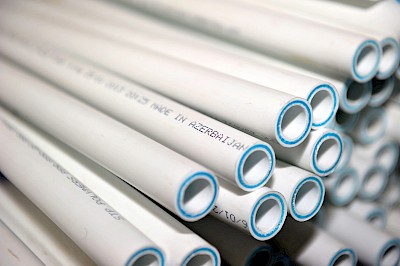Pitch fibre pipes are a popular choice of pipes because they offer many benefits over traditional pipes. They are made from natural materials and are more environmentally friendly than other types of pipe.
Although pitch fibre is not as durable as some other types of pipe, it does have great corrosion resistance and can last for decades without needing repairs.
What is a pitch fibre pipe?
A pitch fibre pipe is a pipe made of pitch and fibre. It is used to transport liquid or gas, and it can be used in various industries such as agriculture and food processing.
Pitch fibre pipes are available in different sizes ranging from 2 inches to 48 inches (50 mm-1120 mm). They are used for large-diameter applications that require high strength and durability. The material used for making this type of pipe includes bituminous coal tar pitch with or without fillers like wood flour or glass fibre mats.
Why was pitch fibre used?
Pitch fibre was used to replace cast iron pipes because it is a natural material and there are many benefits to using this material. Pitch fibre is also sustainable, recyclable, watertight and flexible.
When do you need pitch fibre pipe repair?
If any of the following apply to you and your pitch fibre central heating system, it’s time to call in the experts:
- Your pitch fibre pipe is leaking or damaged.
- Your pitch fibre pipes are blocked.
- You have a problem with your pitch fibre central heating system.
Pitch fibre pipes are prone to leaks and blockages, which can be a real headache. If you leak, it’s important to get it fixed as soon as possible because pitch fibre can become brittle over time and break easily. If your pitch fibre pipe bursts while the water is running, there could be serious consequences like flooding or electrocution due to an electric shock caused by voltage leakage through the broken pipe.
Pitch fibre leaks and blockages
Pitch fibre pipes can be prone to leaks and blockages. It’s important to know what to look for, how to repair a pitch fibre pipe leak and how to repair a pitch fibre pipe blockage.
- Look out for water pooling on your bathroom floor or any other part of the house where there are no drains (such as an attic). This could indicate that there’s been some kind of break in the pipe, which may mean you’ll need to call in London drainage services if the problem isn’t easily fixable yourself.
- If there’s no obvious sign of leakage but you still suspect something might be wrong with your pitch fibre system, try flushing hot water through all outlets until they’re empty before checking them again. If they’re still dry after doing this twice without seeing any signs of moisture then it means that everything’s working fine!
Advantages of pitch fibre pipes
Pitch fibre pipes were a popular choice for central heating systems in the 1970s. They were used because they could withstand extreme temperatures, making them ideal for use in homes with radiators or boilers.
However, today’s technology has moved on considerably and there are now more modern materials that can be used to replace pitch fibre pipes if they need repairing or replacing. Pitch fibre pipe repair is only necessary if there is damage caused by corrosion or age-related wear and tear.
If you suspect that your pitch fibre piping needs repairing or replacing then it’s important to get an expert opinion before taking action yourself as this type of work requires specialist knowledge and tools that most homeowners don’t have access to.
Durability and Longevity
- Resistant to Corrosion: These pipes have excellent corrosion resistance, making them highly durable in various environmental conditions.
- Long Lifespan: When properly installed and maintained, pitch fibre pipes can last for several decades without needing frequent repairs or replacements.
Environmentally Friendly
- Natural Materials: Made from natural resources, pitch fibre pipes are environmentally friendly and have a lower carbon footprint compared to some alternative materials.
- No Toxic Chemicals: Their production doesn’t involve toxic chemicals, reducing potential harm to the environment during installation and usage.
Cost-Efficient
- Lower Installation Costs: Initial installation costs for pitch fibre pipes are often lower compared to some modern materials.
- Reduced Maintenance: With their durability, the need for frequent repairs or maintenance is minimal, saving on long-term costs.
Versatility and Application
- Multiple Uses: Pitch fibre pipes are commonly used in various applications such as building drainage systems and wastewater treatment facilities.
- Repairing Systems: They are also employed to repair damaged or old drainage systems, replacing them with more durable materials.
Ease of Installation
- Simple Installation Process: The installation process for pitch fibre pipes is relatively straightforward, requiring fewer resources and labour compared to some alternatives.
- Lightweight Material: Being lightweight, handling and positioning these pipes during installation is more manageable.
Safety
- Non-Toxic and Asbestos-Free: Pitch fibre pipes are safe to handle and do not emit harmful fumes. They do not contain asbestos, ensuring safety during use.
Reduced Labor
- Simpler Maintenance: Due to their durability, fewer maintenance sessions are required, reducing the need for frequent inspections and repairs.
Pitch fibre pipes offer a combination of durability, cost-efficiency, and environmental friendliness, making them a viable option for various plumbing needs. However, despite these advantages, it’s essential to understand their limitations and potential issues to ensure proper maintenance and timely repairs.
Environmental benefits
Pitch fibre pipes are a great choice for the environment. They don’t require the use of toxic chemicals or waste disposal, which means you can save money on both the initial installation and ongoing maintenance. In addition to saving you money, pitch fibre pipes also have a lower carbon footprint than PVC or other materials used in pipe installation. The material itself requires no energy input during its production process because it is made from natural resources that exist in nature. This means that there will be no need to burn fossil fuels during production either!
The biggest benefit? You’ll need fewer people working on-site at once because the work involved in installing pitch fibre pipes is simpler than other types of materials (such as PVC).
Uses and applications
Pitch fibre pipes are used in a variety of applications, including:
- The construction of new buildings. Pitch fibre pipes are commonly used to build drainage systems and wastewater treatment facilities.
- Repairing existing drainage systems. Pitch fibre pipes can be used to repair damaged or broken drains, as well as replace old ones with more durable materials that can handle more pressure from water flow without breaking down over time.
Safety and other considerations
Pitch fibre pipes are safe to use. However, you should exercise caution when working with them.
Pitch fibre pipe is non-toxic and does not emit harmful fumes when heated or burned. It also does not contain asbestos, which can cause lung disease if inhaled in large quantities over time. However, pitch fibre pipes should not be used as a heat source because they will burn easier than other types of insulation such as rock wool or cellulose insulation products.
In a nutshell
Pitch fibre pipes are a great option for any homeowner who needs to replace their plumbing system. They are durable, environmentally friendly and last longer than other types of pipes.
Ready to upgrade your plumbing system? Contact us today for professional advice and solutions to your drainage needs!











